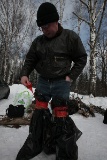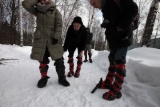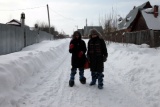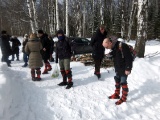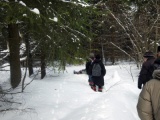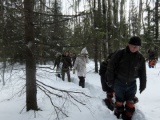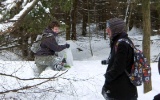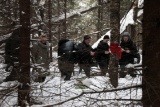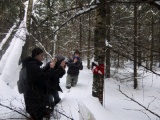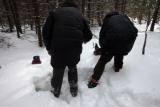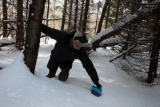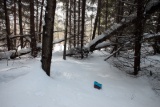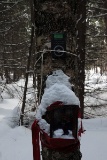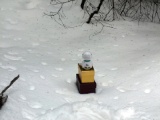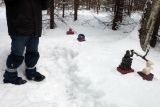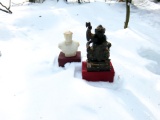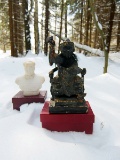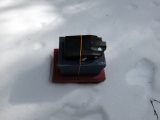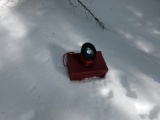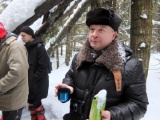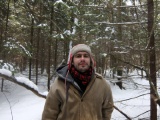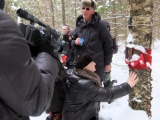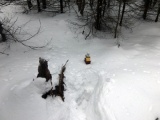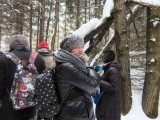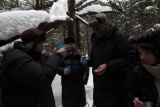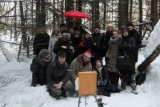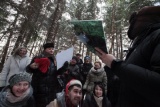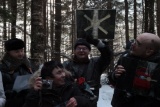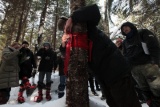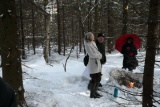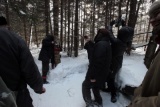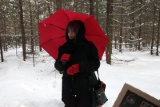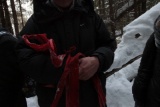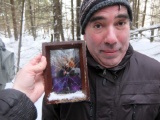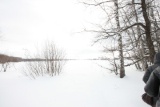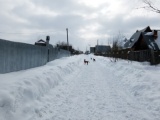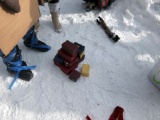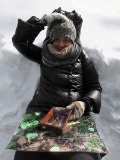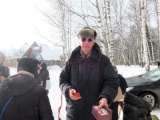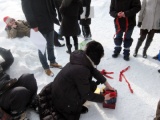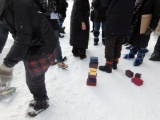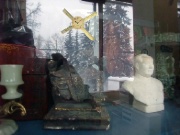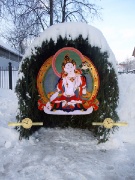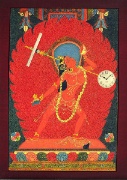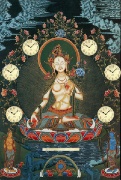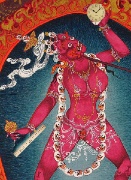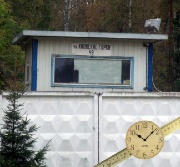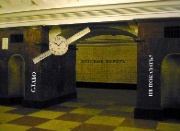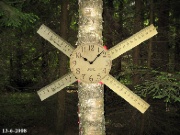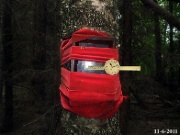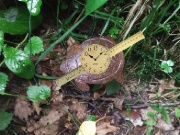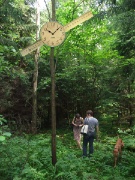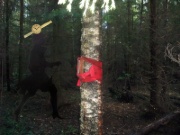KOLLEKTIVNYE DEYSTVIYA (COLLECTIVE ACTIONS). THE DESCRIPTIONS OF ALL THE ACTIONS, Photo and Video
JOURNEYS TO THE COUNTRYSIDE. VOLUME TWELVE
132. The Removal of the Red Binding
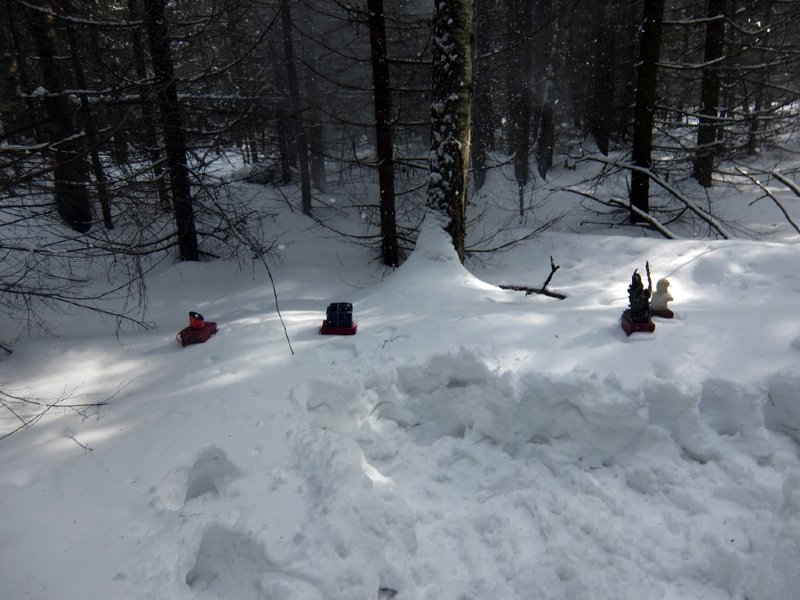
The Removal of the Red Binding
The viewers and organizers were led through deep snow into the forest to the object "The Red Binding" from AM's action Journey to the West (carried out in 2008 within the group Kapiton). Having tramped down the snow around the object, the organizers set up portable speakers around the perimeter of the clearing. The speakers, in the form of "the blue angel," "the rabbit," and "the robot," were set up on small cardboard boxes in the snow, and a fourth player, a DE1125, was placed in the tree above the "Red Binding." All four music players produced the same soundtrack (length of recording: 1 hour and 13 seconds), composed of two themes from the 1990 computer game Zelda (Link) by the composer Koji Kondo: "The Palace Theme," repeated several times, after that "The Overworld Theme" for 29 minutes and 19 seconds, and finally "The Palace Theme" several times again.
10 meters from this main clearing of the place of action was installed an "affiliated branch" of the action. The following items were set up on four boxes in the snow: the speaker to one more music player with the soundtrack from the documentary film The Valley of Dzogchen (a fragment of a service in a monastery), and a video recorder aimed at a statue of Mao Zedong (made out of white plaster) and an unknown ancient Chinese military commander holding two axes (of plaster painted with black paint and gold sequins) seated on a throne. At first, it was supposed that this was either Sun Wukong from the novel Journey to the West or Li Kui from Water Margins, but most likely, it is simply an aggregate image of a military commander.
After the soundtracks on the five speakers began, a painter's easel was set up in the snow and used as a table with cognac and snacks.
When the soundtracks concluded, the "red binding" was unwound and removed from the tree. The ribbon itself was cut into pieces and placed in the boxes that had been supporting the speakers and action objects, and these boxes were distributed to the audience as additional factography (the portrait of Wellesz went to Yu. Albert). The main factography, distributed to the audience and made up of laminated photographs of three sizes (A3, A4, and A5), consisted of collages of different documentary photographs related to this place of CA actions and several Buddhist images (each photograph had an image of a clock and rulers representing the theme of "measuring time and space" collaged into it).
Moscow Region, the forest near the Kievogorskoe Field
March 21, 2013
A. Monastyrski, N. Panitkov, S. Hänsgen
Viewer-participants in the action: M. Sumnina, D. Novgorodova (photo), Yu. Ovchinnikova (video), S. Zagny, M. Buvailo, G. Titov, I. Korina, A. Kuzkin, Yu. Albert, S. Sitar, O. Sarkisian, I. Nakhova, D. Volodin, T. Peniker, A. Burenkin, A. Zabrodin.
translated by Yelena Kalinsky

